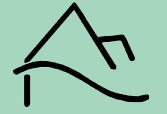


Hoeing
Just as one purpose of Ploughing is to control competition from weeds, at the germination stage, so hoeing is intended to reduce competition during the early growth phase in particular.
However, it should be noted that at least as late as the 1970's, in South America, hoes were being used to break clods after ploughing with an ard (in Mercer 1981). So, in this context, the hoe is being used to prepare the seed bed. In a similar way, a mattock hoe was used to prepare fields as part of the trials at the original Little Butser Research Site (Reynolds 1981).
In other trials, at Butser, hoeing to control weeds was carried out in early April and May. Reynolds reported this as being especially necessary to control Charlock (Sinapsis arvensis). In the UK, early in the 20th century before the introduction of herbicides, it was not unknown to plough crops back into the soil because of Charlock infestation.
Once the crop is established, however, there may be no benefit from hoeing. In fact harm may be caused if careless work damages the developing crop root system at the wrong time. There is much evidence to show that weeds are most harmful in the early or very early stages of crop growth (Russell 1961). It should be recognised that where crops are sown by broadcasting, then hand weeding is the most appropriate control method. Hoeing requires the seeds to be sowed in drills or rows.
It is important to appreciate that there may be an interaction between Manuring and the relevance or need for hoeing, because the crop and the weed/s may react differentially to the extra food supply provided by any manure. Where the crop is stimulated more than the weed/s, then it may outstrip and smother the weeds, negating the need for hoeing. If hoeing is carried out and damages the crop roots and sets it back more than the weeds it could even be counterproductive! (Russell 1961).
There are other contexts in which hoeing may be considered as a useful practice. Where irrigation, in particular, has compacted the surface of a fine textured soil, then a light hoeing to create a thin open surface layer, enhances the ingress of carbon dioxide. Just as with ploughing (link above) this layer does not lead to drying out (Russell 1961).
It should always be remembered that hoeing is labour intensive and, in the context of experimental work, must be carried out at the right time, when there may be other conflicting demands.
Against these conflicting needs and effects, along with the need to consider the relevance of timing especially, then it is clear that to incorporate hoeing into an experimental design requires considerable understanding and thought, including requirements for analysis of the data.
References
Reynolds, P J "Deadstock and Livestock", in "Farming Practice in British Prehistory" pp 97-
Mercer, Roger (ed.) "Farming Practice in British Prehistory" Edinburgh University Press 1981
Russell, E Walter "Soil Conditions and Plant Growth" Longmans 1961 (9th Ed.).